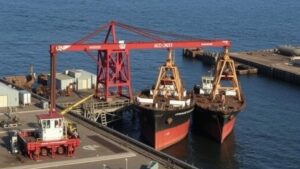Tracing Disused Toll Bridge Sites for Transportation Artifact Discoveries
Tracing Disused Toll Bridge Sites for Transportation Artifact Discoveries
The legacy of toll bridges in the United States has significantly shaped transportation infrastructure and economic development. Some bridge sites, once bustling with activity, are now disused, yet they offer valuable opportunities for archaeological and historical research. This article explores methods for identifying and tracing these sites, the artifacts that may be discovered, and the implications for understanding past transportation systems.
Historical Context of Toll Bridges
Toll bridges emerged in the early 19th century as essential links in transportation networks across the United States. first recorded toll bridge was the Charles River Bridge in Massachusetts, established in 1786. Such infrastructures enabled commerce and connectivity, reflecting the economic needs of their times. The proliferation of toll bridges peaked during the 1920s and 1930s, correlating with increasing automobile use; however, many have since been dismantled or repurposed.
Significance of Transportation Artifacts
Artifacts recovered from disused toll bridge sites can provide invaluable insights into transportation practices, engineering techniques, and socio-economic conditions of the past. Examples include:
- Structural remains, such as bridge supports and trusses, which illustrate engineering styles and materials used in historical construction.
- Transportation-related implements like vehicle tags, toll tickets, and signage that reflect the logistical operations of the toll system.
- Artifacts linked to users, such as personal items left behind, offering perspectives on the everyday lives of travelers.
Methodologies for Site Tracing
Tracing disused toll bridge sites requires a combination of historical research, geographical analysis, and archaeological techniques. The following methodologies are commonly employed:
- Historical Maps and Records: Utilizing historical documents, such as toll records, maps, and transportation reports, researchers can identify previous locations of toll bridges. For example, the American Memory project of the Library of Congress provides access to a wealth of historical maps.
- Remote Sensing Technology: Geospatial techniques such as LiDAR (Light Detection and Ranging) can reveal subtle ground disturbances indicative of former bridge locations. e technologies have successfully identified traces of lost structures, such as the disused toll bridges along the River Seine in France.
- Field Surveys: Conducting on-the-ground surveys involving metal detection and ground penetrating radar (GPR) helps locate artifacts and structural remnants. For example, GPR was employed effectively in the investigation of the former Linnean Street Bridge in Philadelphia.
Case Studies of Artifact Discoveries
Several notable case studies exemplify the importance of excavating disused toll bridge sites:
- The Poughkeepsie Bridge, New York: Once a prominent toll bridge spanning the Hudson River, it served as a critical crossing point from 1888 until its closure in 1974. Archaeological studies conducted on the site revealed artifacts from its operational years, including remnants of the toll collection booth and vehicle registrations, providing context for transportation practices of the era.
- The Tarentum Bridge, Pennsylvania: Historical surveys of this former toll bridge, first opened in 1888, turned up numerous artifacts, including toll tokens and structural components made from now-obsolete materials. Studies at this site have contributed to understanding regional transportation evolution in the late 19th century.
Implications for Future Research
The ongoing exploration of disused toll bridge sites holds considerable promise for deepening our understanding of historical transportation systems. By integrating archival research, advanced technology, and archaeological excavation, researchers can garner a comprehensive picture of past societal dynamics.
Conclusion
Methodically tracing disused toll bridge sites can yield rich deposits of artifacts, which not only bear witness to the transportation narratives of their time but also provide a lens through which current and future transportation planning can be informed. As transportation systems evolve, understanding historical precedents will be critical. Future initiatives should prioritize collaboration among historians, archaeologists, and transportation planners to maximize the potential of these investigations.
In summary, while many toll bridges have ceased operation, the sites themselves remain treasure troves of history, offering invaluable resources for understanding and appreciating America’s rich transportation heritage.

